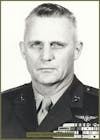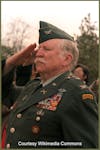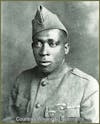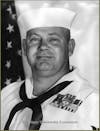US Marine Corps Col Jay Vargas: Medal of Honor Recipient who displayed Heroism during the Vietnam War
Colonel Jay R. Vargas dedicated his life to the United States Marine Corps. His defining moment came during the Vietnam War's Battle of Dai Do in 1968, where he served as a company commander. Vargas displayed exceptional le...
Colonel Jay R. Vargas dedicated his life to the United States Marine Corps. His defining moment came during the Vietnam War's Battle of Dai Do in 1968, where he served as a company commander. Vargas displayed exceptional leadership and courage, earning him the Medal of Honor, the highest military decoration in the U.S. After Vietnam, he continued his military service, holding various command and staff positions until his retirement in 1992. Colonel Vargas's illustrious career is marked by a legacy of valor, selflessness, and an enduring commitment to the principles of duty and valor.
Please visit our website to learn more about other American Heroes.
www.dutyandvalor.com
Sources:
wikipedia.org
cmohs.org
usmcu.edu
lubbockonline.com
garysinisefoundation.org
warhistoryonline.com
navymemorial.org
medalofhonorspeakout.org
marines.mil
Thank you for listening to Duty & Valor!
Music by Amelie Leclerc. Artist's other music can be found here.
Please follow us on your favorite social media site.
Facebook
Instagram
Twitter
YouTube
Welcome back everyone. On today's episode of Duty & Valor, you’ll hear the story of a man who led a company of Marines against a determined enemy during the Vietnam War. A man who though injured displayed valor on multiple occasions. A man who was credited with saving the lives of wounded Marines during a multiple day battle. This is the story of Medal of Honor recipient US Marine Corps Colonel Jay Vargas.
Born in Winslow, Arizona on July 29th, 1938 Jay Vargas was the youngest of four boys born to immigrant parents of Italian and Hispanic descent. The Vargas family was a military family. Jay’s brothers Angelo and Frank fought in the Pacific during WWII, while Joseph fought during the Korean War.
After graduating high school in Winslow, Jay received a bachelor's degree from Northern Arizona University and a Masters from US International University. Jay was always a good athlete and even played in the LA Dodgers class A farm team in Portland. Though it was his dream to play professional baseball, he soon felt that goal was out of reach, rather he decided to continue the Vargas family tradition and enter military service.
Jay’s mother wanted him to join the Air Force, but in 1963 he became a leatherneck instead. He received a commission in the Marine Corps and was assigned to the 1st Battalion, 5th Marines, 1st Marine Division.
By April 29th, 1968, Vargas, now a Major, was commander of Company G, 2nd Battalion, 4th Marine Regiment, 9th Amphibious Brigade. On that day, Company G was the last American unit positioned at the DMZ separating North and South Vietnam. The plan called for Vargas’ unit to be airlifted back to base camp by helicopter, but when they arrived the helicopters came under heavy enemy fire from the ground and were forced to withdraw before a single man made it aboard.
Vargas now had to lead his men back to base camp under complete darkness during a dangerous nighttime march. The North Vietnamese knew their position the whole time and they were under constant artillery fire. Lucky for the Marines, the muddy rice paddies absorbed some of the blasts and the men all made it back safely after five hours.
Vargas and his men had been up for around 36 hours so they were relieved to be back at camp. Vargas and some of his men were wounded and could use some rest. But this solace didn’t last long as they were immediately sent back into battle. Nearby, two Marine Companies were engaged in heavy fighting at the village of Dai Do against a North Vietnamese Regiment.
The men were loaded aboard landing craft and they made their way down a river to connect with the other Marines. Early in the afternoon, Vargas took Company G ashore. There he was given the order to combine with two other companies and traverse 700 yards of open ground to attack the enemy. Roughly a third of the way there, the North Vietnamese opened fire on them with everything they had. Facing small arms, machine gun, mortar and artillery fire, one platoon was quickly pinned down behind a hedgerow.
Vargas didn’t waste any time. He personally took command of a reserve platoon and they fought their way towards the other Marines. Between them and the other platoon stood four machine gun emplacements. Though injured again by grenade shrapnel, Vargas’ tactical plan was effective and they silenced all four guns, with Vargas taking out two of them himself, killing 14 men while doing so. Though many reports say that he destroyed three machine guns by himself, in an article in the Lubbock Avalanche-Journal by Ray Westbrook, Vargas is quoted as saying that he took out two machine guns. Which is an admirable feat in itself.
Now that the pressure was taken off the other platoon, Vargas was able to lead his men on an assault on the village. With all Marines now advancing on the North Vietnamese, they were overwhelmed and pushed out into the open on the other side of the village. In addition to artillery fire, US forces were able to call in air support from fixed wing aircraft and helicopter gunships in the area. In the same articlel, Vargas would later say that “we just annihilated them. Hundreds of them in a matter of minutes.”
Figuring that they had just defeated the enemy in front of them, the Marines were shocked to become the target of a fierce North Vietnamese counterattack. They had to fight hand to hand against an enemy that was appearing out of nowhere. Men were coming out of spider holes and out of, what were believed to be, abandoned huts. Vargas said that the hand to hand fighting “was the ugliest, it was the worst kind of fighting, you can imagine. I very seldom talk about it. It was ugly.”
Eighty of the original 160 Marines were left fighting, many had been wounded or killed. They pulled back into a cemetery with freshly dug graves. Since villagers had long evacuated their homes, they knew these graves were those of North Vietnamese soldiers.
The Marines were then surrounded and pinned down in that cemetery. With darkness setting in, the men were trapped and they would have to fight hard to see daylight. The enemy was firing at them from positions on all sides around them. They were also determined to overrun the Marines and broke through their defensive lines many times. Without proper cover, Vargas gave the order to dig up some of the graves and use them as foxholes. He told his men that it would be uncomfortable, but it was the only way they would survive the night.
By dawn, Company G had been up for well over forty hours, but they were fueled along by pure adrenaline, according to Vargas. They were successful in their defense and all Marines survived the night. And around the cemetery they saw the bodies of approximately 340 enemy soldiers littering the ground, but the three day battle was far from over.
Reinforcements soon arrived and the combined Marine units renewed their assault on the North Vietnamese. They pushed them back into a second village when they faced a fierce counterattack. Vargas was brutally honest when he told his men that it was going to be a “battle to the death.” They were low on ammunition, but Company G fought on. They had to resort to hand to hand combat, stabbing the enemy with their knives and striking them with their pistols and rifle butts.
During the fighting, Vargas carried a Marine, who had lost his arm, to safety. At that point, the same Marine begged to have his arm back. Vargas went on to find it and returned it to the man. Throughout the fighting, Vargas was also seen out in the open encouraging his men to fight on, even after being wounded again.
The battalion commander, who arrived with the reinforcements that morning, was fighting alongside his Marines. At one point he had turned to give orders when he was hit three times by rifle fire. Vargas raced to his side. Though dealing with intense pain himself, he dragged his commander a hundred yards to an evacuation point, all the time firing on the enemy with an AK-47 he had picked up from the bloody ground.
Vargas then returned to command the Marines in their defense. After three days of intense fighting around Dai Do, the North Vietnamese retreated into the jungle.
It was at this point that Major Vargas was finally treated for bullet and shrapnel wounds.
For his leadership and heroic acts exhibited over the multiple day battle, Major Jay Vargas was awarded the Medal of Honor, and he was presented the award by President Nixon at a White House Ceremony on May 14th, 1970.
To honor his mother, who had passed away just months prior to the ceremony, Major Vargas asked that her name be engraved on the back of the medal. President Nixon honored this request and on the back is engraved the name M. Sando Vargas.
Jay Vargas remained in the Marine Corps until his retirement in 1992 at the rank of Colonel. In 1993 he was appointed the Secretary of the California Department of Veterans Affairs and remained in that role until 1998. He then served as the Regional Veterans Liaison for the US Department of Veterans Affairs from 2001 to 2009, a territory that encompassed 19 Western states, Guam, and the Philippines.
During the Vietnam War, Colonel Vargas’ indomitable spirit and extraordinary leadership during the Battle of Dai Do set a standard of valor. Despite facing the relentless storm of enemy fire, Vargas demonstrated a rare blend of resilience and heroism, repeatedly putting the welfare of his fellow Marines above his own. His gallant actions, for which he was awarded the Medal of Honor, epitomize the essence of a Marine Corps hero.
Thank you for listening to this episode of Duty & Valor. To read more about this week’s hero, check out the sources used in today's episode in our show notes and at dutyandvalor.com.
If you want to listen to our episodes early, we release new episodes on our YouTube channel of the same name on Fridays at 5pm. Also, on our channel we release daily YouTube shorts that highlight our Nation’s heroes, most of whom haven’t been featured on the show yet.
Be sure to like, follow, and share our episodes and please join us for our next episode, where we'll be sharing the inspiring story of another American hero who served with pride and lived with humility.




















